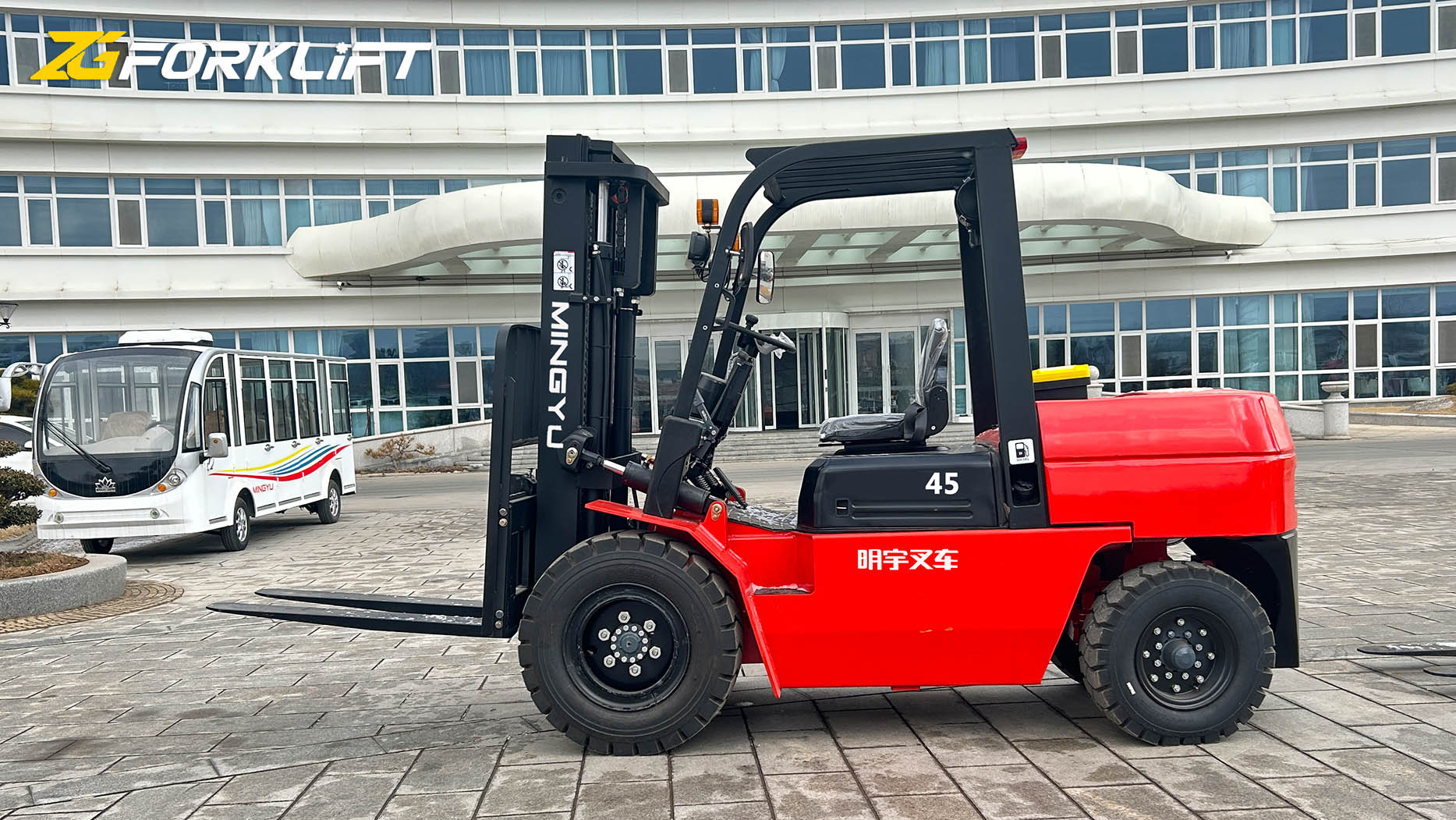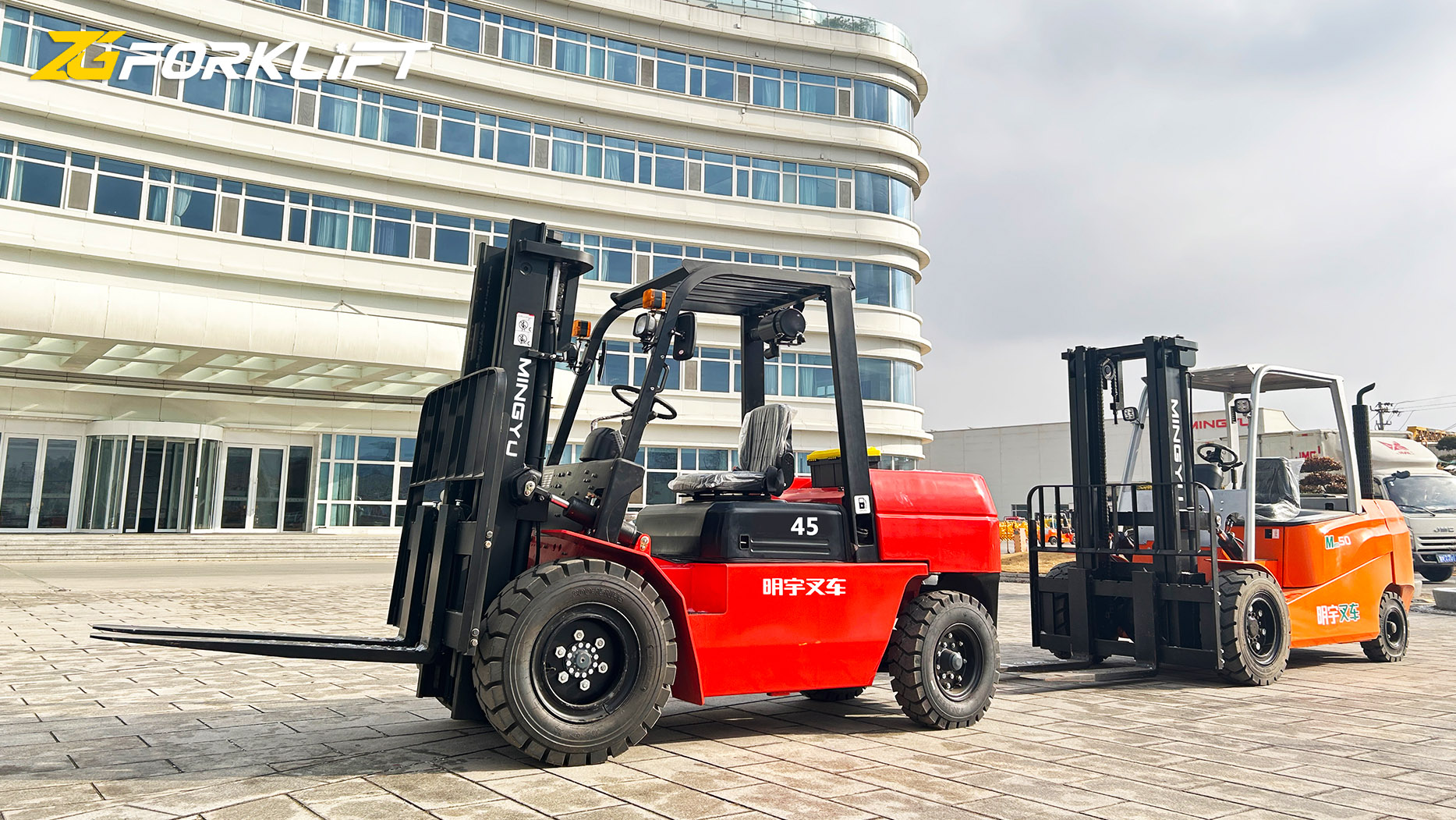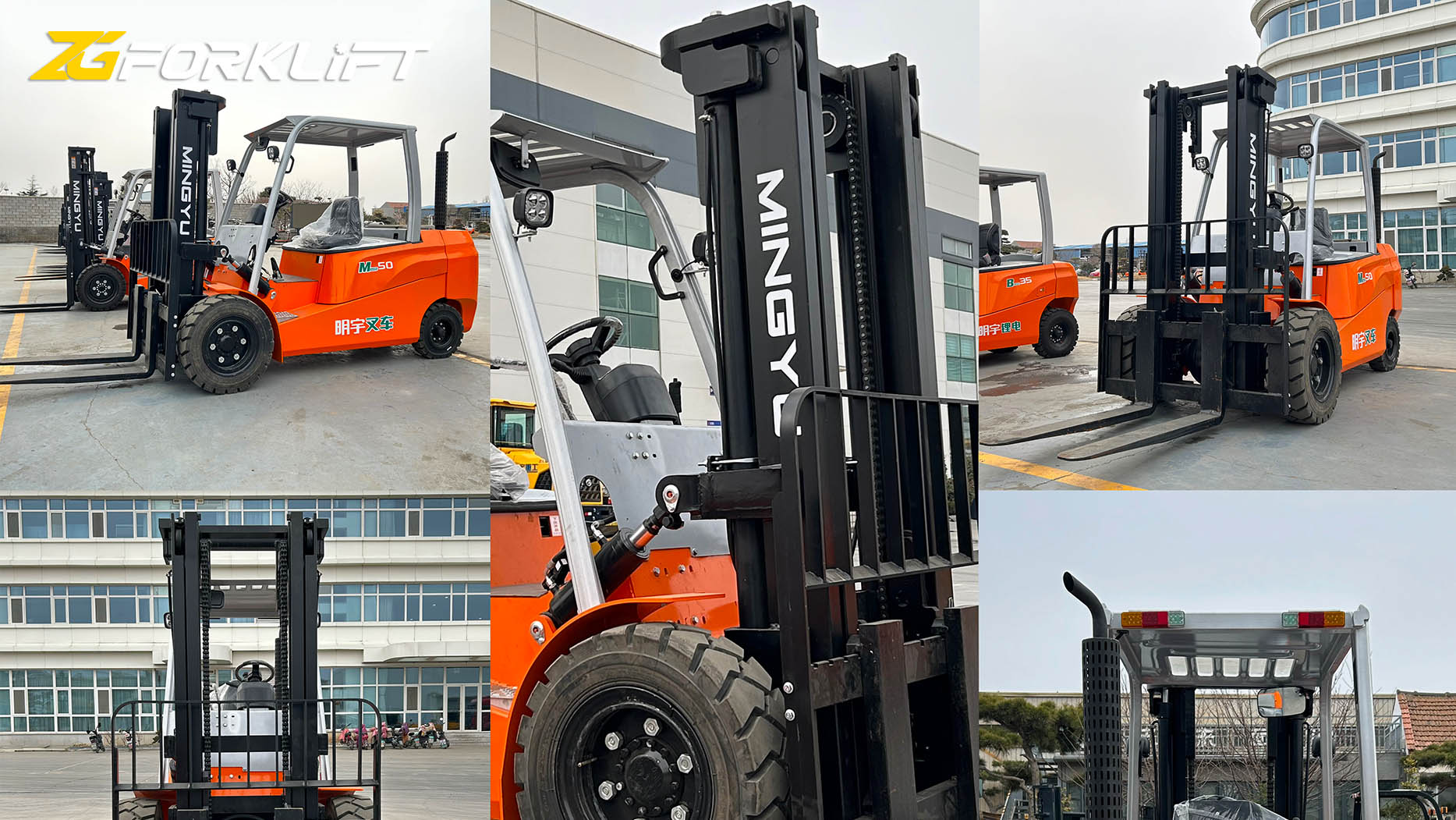Forklifts are essential material handling equipment used in warehouses, construction sites, manufacturing facilities, and various other industries. Choosing the right forklift for a specific application is crucial for maximizing efficiency, minimizing costs, and ensuring safety. One of the primary decisions to make is whether to opt for a diesel-powered or an electric-powered forklift. This article delves into the key differences between these two types of forklifts, examining their advantages and disadvantages in terms of performance, cost, environmental impact, maintenance, and application suitability.
Power Source and Performance:
Diesel Forklifts: Diesel forklifts are powered by internal combustion engines that burn diesel fuel. They are known for their robust power and ability to handle heavy loads, making them suitable for demanding applications and outdoor use. Diesel engines deliver high torque, which is essential for lifting heavy loads and navigating inclines. They also offer longer run times between refueling, making them ideal for continuous operation over multiple shifts.
Electric Forklifts: Electric forklifts are powered by rechargeable batteries. They offer instant torque and smooth acceleration, making them well-suited for indoor applications and tasks that require precise maneuvering. Electric motors are generally quieter than diesel engines, reducing noise pollution in the workplace. However, electric forklifts have limited run times compared to diesel forklifts and require periodic recharging, which can lead to downtime.
Fuel and Operating Costs:
Diesel Forklifts: While diesel fuel is generally less expensive per unit than electricity, the overall operating costs of diesel forklifts can be higher due to factors like fuel consumption, maintenance requirements, and potential downtime for refueling. The price of diesel fuel can also fluctuate significantly, impacting operating costs.
Electric Forklifts: Electric forklifts have lower operating costs due to lower fuel costs (electricity is often cheaper than diesel) and reduced maintenance requirements. However, the initial investment in batteries and charging infrastructure can be significant. The cost of electricity can also vary depending on the region and time of day.
Environmental Impact:
Diesel Forklifts: Diesel forklifts produce emissions such as nitrogen oxides (NOx), particulate matter (PM), and carbon dioxide (CO2), which contribute to air pollution and greenhouse gas emissions. These emissions can be harmful to human health and the environment, making diesel forklifts less suitable for indoor applications with poor ventilation.

Electric Forklifts: Electric forklifts produce zero tailpipe emissions, making them a cleaner and more environmentally friendly option, especially for indoor use. However, it's important to consider the source of the electricity used to charge the batteries, as electricity generated from fossil fuels can still contribute to emissions.
Maintenance Requirements:
Diesel Forklifts: Diesel forklifts require more frequent and extensive maintenance compared to electric forklifts. This includes regular oil changes, filter replacements, engine tune-ups, and other maintenance tasks associated with internal combustion engines. These maintenance requirements can lead to higher downtime and increased costs.
Electric Forklifts: Electric forklifts have fewer moving parts than diesel forklifts, resulting in lower maintenance requirements. They don't require oil changes or engine tune-ups, and their maintenance typically involves checking battery health, inspecting electrical connections, and maintaining the hydraulic system. This translates to lower downtime and reduced maintenance costs.
Noise Levels:
Diesel Forklifts: Diesel forklifts are generally noisier than electric forklifts due to the operation of the internal combustion engine. This noise pollution can be a concern in indoor environments and can contribute to operator fatigue.
Electric Forklifts: Electric forklifts operate much more quietly than diesel forklifts, reducing noise pollution in the workplace. This makes them a more comfortable and less disruptive option, especially in indoor environments.
Application Suitability:
Diesel Forklifts: Diesel forklifts are best suited for heavy-duty applications, outdoor use, and environments where long run times are required. They are commonly used in construction, lumber yards, and other industries where heavy lifting and continuous operation are essential.
Electric Forklifts: Electric forklifts are ideal for indoor applications, warehouses, food processing facilities, and other environments where clean air and low noise levels are important. They are also well-suited for applications that require precise maneuvering and frequent starts and stops.
Fueling/Charging Infrastructure:
Diesel Forklifts: Diesel forklifts require access to a diesel fuel supply, either through on-site fuel tanks or regular refueling. This can involve additional logistics and potential spills.
Electric Forklifts: Electric forklifts require charging infrastructure, including charging stations and sufficient electrical power supply. Charging times can vary depending on the battery type and charger, and proper battery management is essential for maximizing battery life.
Purchase Price:
Diesel Forklifts: Diesel forklifts typically have a lower initial purchase price compared to electric forklifts.
Electric Forklifts: Electric forklifts generally have a higher upfront cost due to the cost of batteries and charging equipment. However, the lower operating and maintenance costs can offset the higher purchase price over the lifespan of the forklift.
Battery Life and Replacement:
Electric Forklifts: The lifespan of forklift batteries can vary depending on usage, maintenance, and charging practices. Battery replacement is a significant cost associated with electric forklifts and should be factored into the total cost of ownership.
Operator Comfort:
Diesel Forklifts: While modern diesel forklifts offer improved operator comfort, they can still produce vibrations and exhaust fumes that can contribute to operator fatigue.
Electric Forklifts: Electric forklifts offer a smoother and quieter ride, reducing operator fatigue and improving overall comfort.
Conclusion:
The choice between a diesel and an electric forklift depends on the specific needs and priorities of the application. Diesel forklifts are well-suited for heavy-duty applications, outdoor use, and long run times, while electric forklifts are ideal for indoor use, environments where clean air and low noise levels are important, and applications that require precise maneuvering. A thorough assessment of the operating environment, load capacity requirements, duty cycle, cost considerations, and environmental concerns is essential for making an informed decision. In many cases, a combination of both types of forklifts may be the optimal solution for maximizing efficiency and meeting diverse operational needs.
Post time:Feb.19.2025


